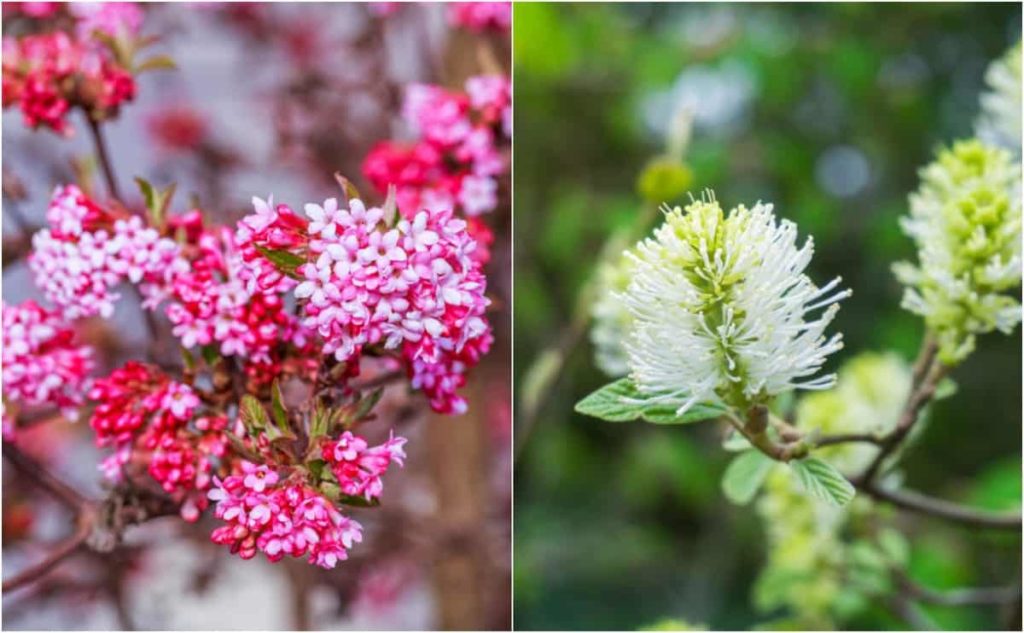
This year more than ever I am craving early spring blooming plants. There are still weeks until the first leaves will pop. And I’m just done with brown and gray.
I’m really thinking about what I could plant now so that next late winter/early spring, there are blossoms for fragrance and cut flowers to brighten things up.
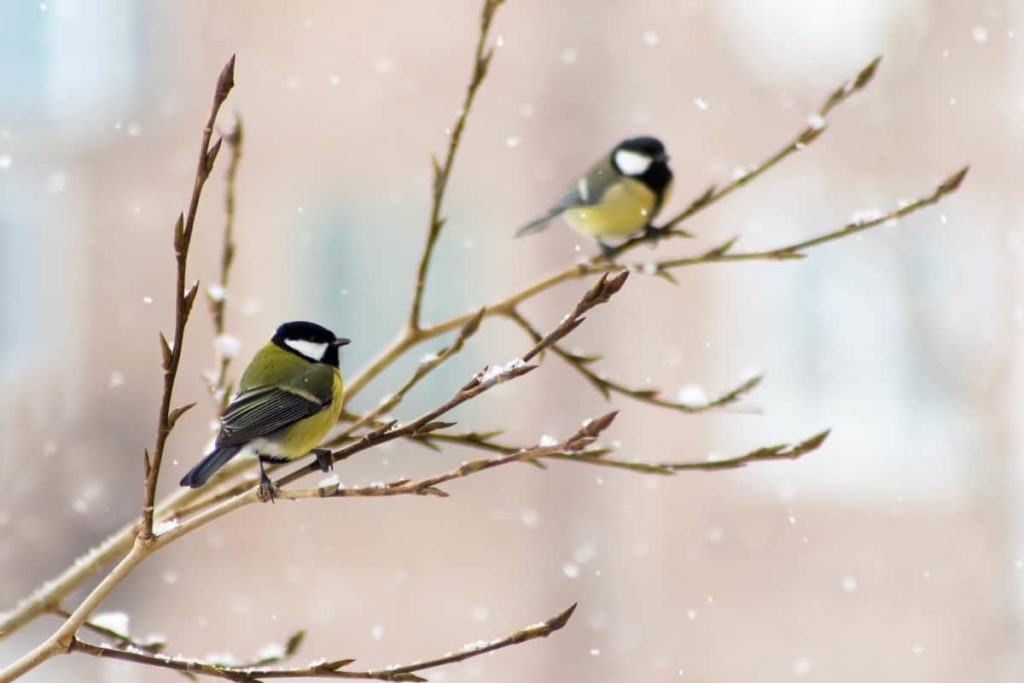
The thought is persisting. Recently I read about how the fragrant blossoms on an early blooming shrub like witch hazel are more precious than a whole blooming border in July. Fresh blooms in early spring hold so much hope and anticipation for the season to come.
Early Blooming Tricks
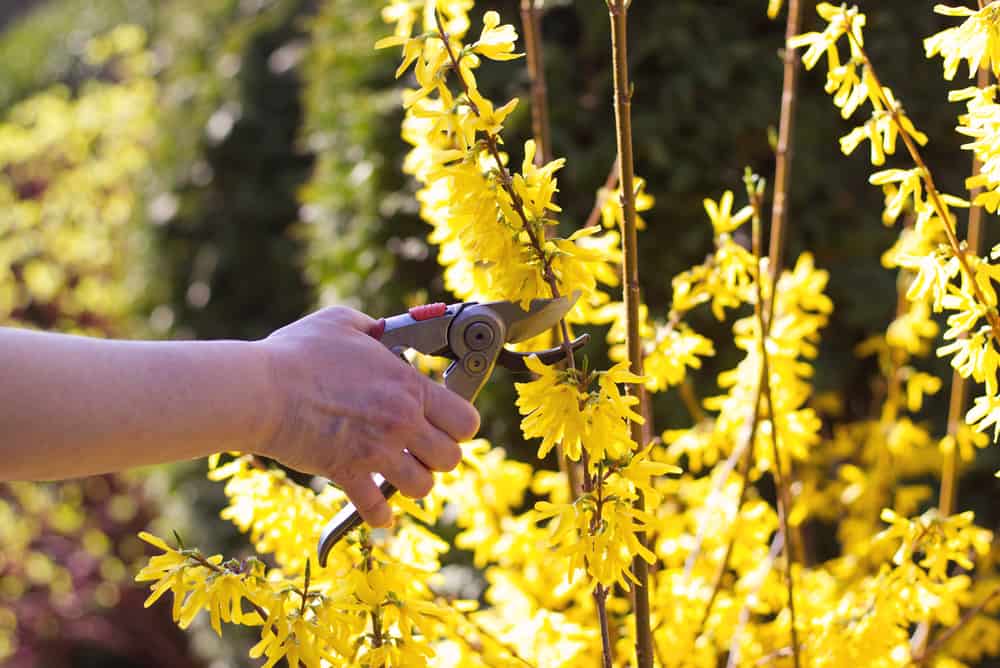
An important trick for early blooming shrubs is to not prune too late. Buds begin to form on last year’s wood soon after the shrub has completed blooming. A summer or fall pruning session might remove many of next early spring’s blossoms.
Spring Bloomers Flower on Old Wood
This is true for many of the more famous spring bloomers like lilac and rhododendron too. These, along with azalea, hydrangea, and many other spring performers also bloom on old wood.
Flowers Before Foliage
The earliest bloomers often make their flowers even before the shrubs have leaves. Like early spring apple and cherry blossoms, we can have spectacular early flower shows, and some that are in bloom as early as the end of January!
Top 8 Early Spring Flowering Shrubs
1. Witch Hazel (Hamamelis vernalis, H. japonica, H. mollis)
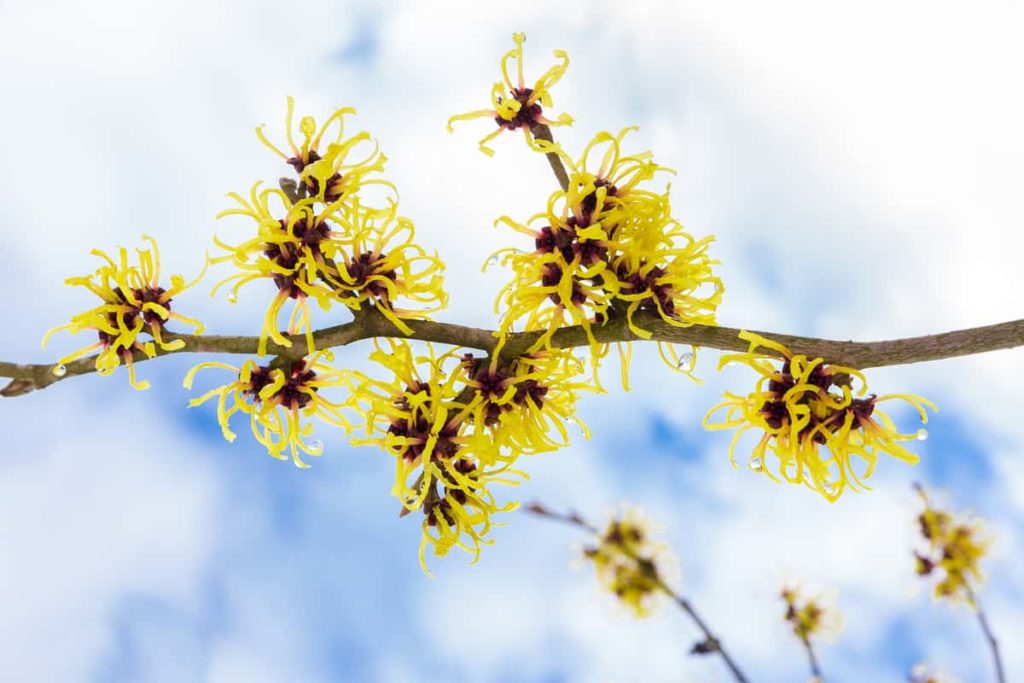
Standout Feature: Blooming as early as January in some places, their buttery lemon-like fragrance is enchanting, welcoming in the changing season.
Size and Shape: Vase-shaped, growing 10 to 15 feet (3 to 4.5 m) tall and wide.
Hardiness Zone: 5 to 8.
Care: Witch Hazel tolerate acid and alkaline conditions, preferring moist, humus-rich soils. They prefer full sun. Blooms arrive on last year’s wood. Only prune soon after blooms are finished.
Best Use: Witch Hazel performs best as a specimen. You may want to plant it where its fragrance can be enjoyed in early spring near a high traffic area or entrance. It is gorgeous backlit by a winter setting sun.
2. Forsythia (Forsythia)
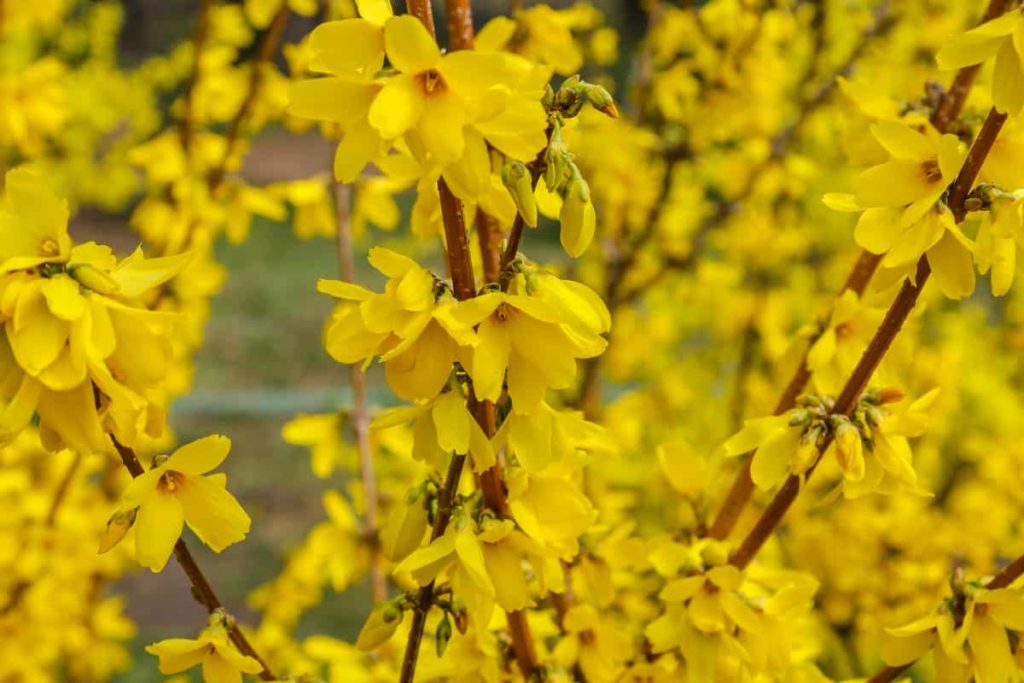
Standout Feature: Upright branches are essentially smothered in gold in early spring on this long-lived and long loved shrub. You will be long remembered as the harbinger of spring when you disperse the lovely flowering branches to your neighbors and loved ones each year.
Size and Shape: Exceedingly fast growing, gaining up to 24 inches (60 cm) each year, Forsythia may grow 10 feet (3 m) high and 12 feet (3.6 m) wide. Plan to give it enough space and allow its unruly temperament to reward you each spring with its lovely flower show.
Hardiness Zone: 5 to 9.
Care: Thriving in full sun in well-draining soil, its vigorous growth can be hard pruned. It is recommended to remove 1/3 of the branches each spring. It blooms on old wood, so be sure to prune early, during or directly after flowering, to allow for next year’s blossoms to set.
Best Use: Forsythia makes a memorable statement hedge or screen. It also makes a gorgeous spring-themed specimen.
3. Rose Daphne (Daphne cneorum)
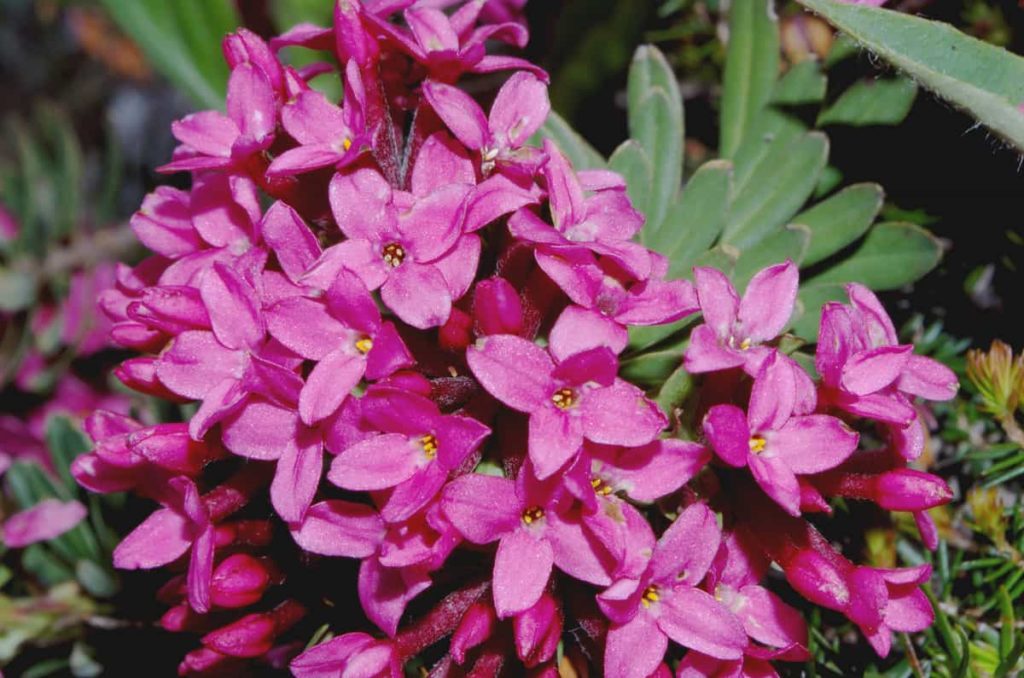
Standout Feature: The enchanting aroma of Rose Daphne is one of my most favorites of early spring. This low-growing, compact evergreen is covered in fragrant pink blossoms for weeks in early spring.
Size and Shape: A ground covering shrub with a mounding habit, it hugs the earth, reaching 12 inches (30 cm) tall, and 24 to 36 inches (60 to 90 cm) wide.
Hardiness Zone: 4 to 9.
Care: These plants are sun loving and long lived. Rose Daphne require little care once established. They do not enjoy transplanting and need protection from wind. Rose Daphne are a great choice for heavier clay soils which are neutral to alkaline. If pruning is needed for tidiness, only prune in early spring just after blooming because flower buds form on old wood. It may provide sporadic blooms in summer.
Best Use: A wonderful addition to the rock garden, used in mass plantings, or at the front of the border.
4. Saskatoon Berry (Amelanchier alnifolia)
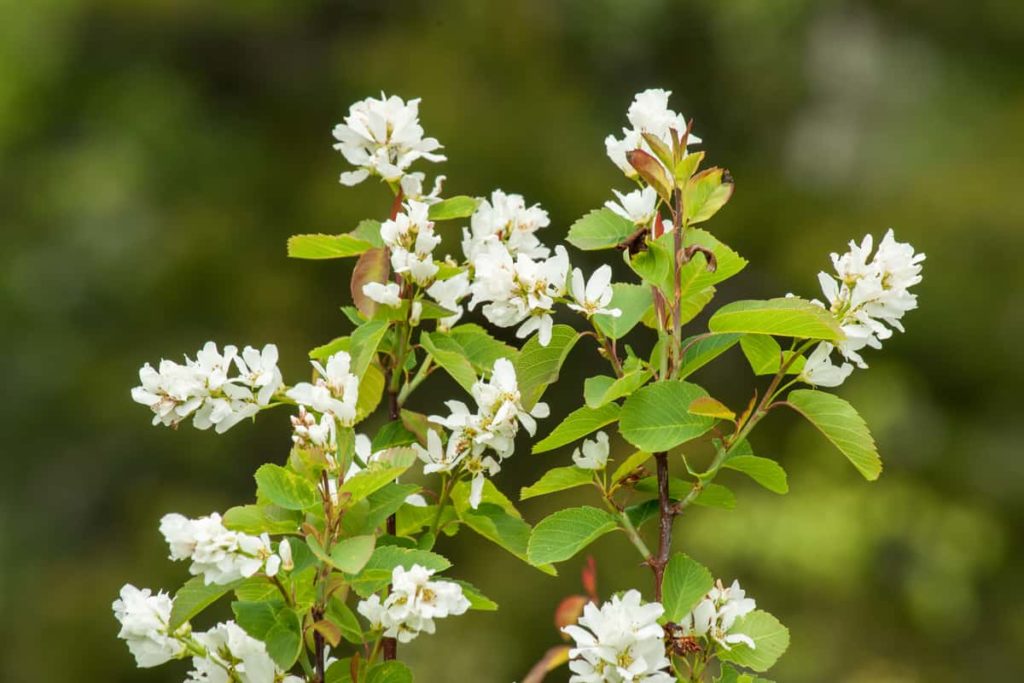
Standout Feature: White dense flower cluster dance at the ends of branches in the winds of early spring. Visited by many early butterflies. Sets a nice tasting fruit in late summer.
Size and Shape: Airy, upright, open branched deciduous shrub which grows 3 to 26 feet (1 to 8 m) tall. It can be clump forming with a suckering habit that may create a mass or colony in a naturalized setting.
Hardiness Zone: 2 to 7.
Care: In the right setting, saskatoon may naturalize easily. Pruning will reduce flowers and fruit. Tolerant of many growing conditions but fruits are tastier in warmer, moister areas.
Best Use: Border or mass planting, naturalized areas, and butterfly gardens.
5. Viburnum ‘Dawn’, (Viburnum x bodnantense ‘Dawn’)
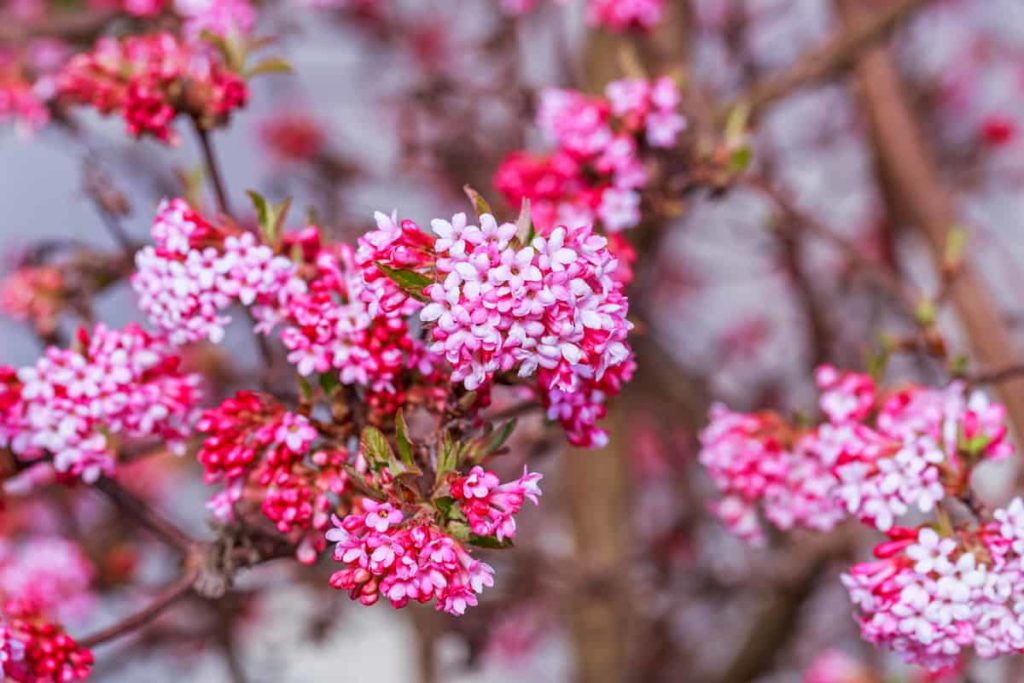
Standout Feature: A favorite genus of early spring blooming shrubs, viburnums cover a lot of ground! My all-time favorite is a very hardy Viburnum opulus, or snowball viburnum, which thrives in zone 3. It blooms later than Dawn viburnum, so this stunning, fragrant, earliest of blooming viburnums made the list.
Size and Shape: Reaching 8 to 10 feet (2.4 to 3 m) tall, Dawn viburnum pleases through the seasons with its easy-to-maintain shape, lovely foliage tinged in shades of bronze, turning emerald green in summer, and burning burgundy in fall.
Hardiness Zone: 5 to 7.
Care: Easy to maintain, this shrub will perform through the seasons, loving many conditions, sun exposure, and soil types. A drought tolerant shrub, its rusty orange branches provide nice winter interest. Blooms arrive on bare stems that you can trim and brought inside to share the spicy scent. Pruning during or just after flowering may promote vigorous growth.
Best Use: In the border or as a specimen, Dawn viburnum does particularly well where its blooms can be enjoyed in early spring, near a walkway or front door.
6. Fothergilla (Fothergilla x intermedia)
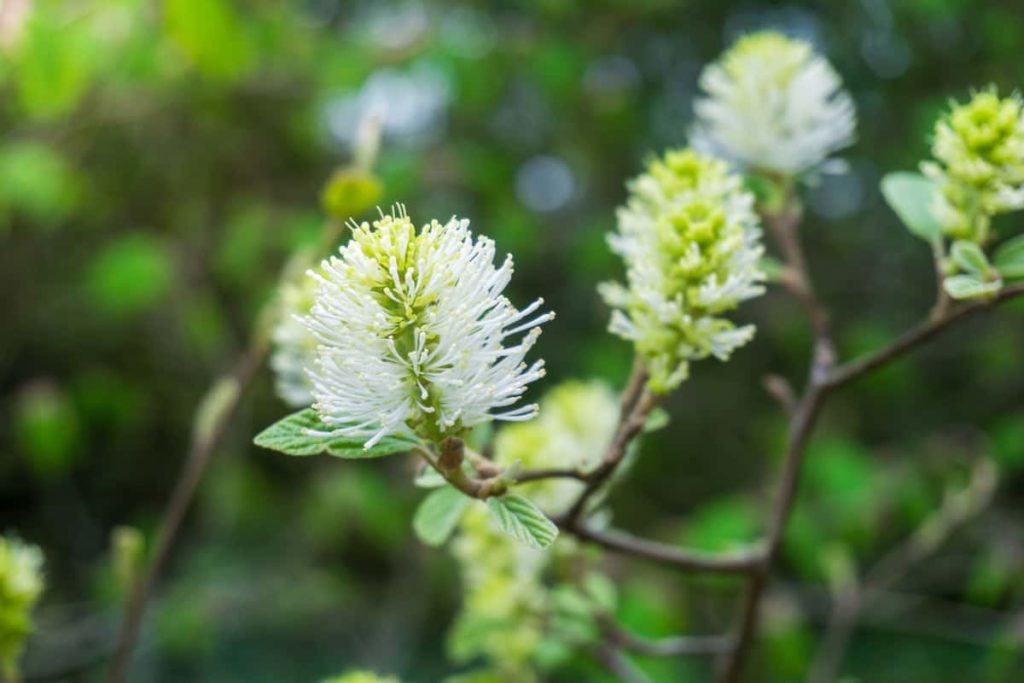
Standout Feature: Bottlebrush like blooms are fragrant and arrive on bare branches in early spring as white and yellow feathery puffs. Foliage maintains interest through the year, turning blueish in summer and offering a range of gorgeous fall color too.
Size and Shape: This deciduous shrub grows 4 to 6 feet (120 to 180 cm) tall and wide in a rounded, compact form.
Hardiness Zone: 5 to 8.
Care: Related to Witch Hazel, this natural hybrid prefers moist, well-drained, acidic soils. It blooms more profusely and maintains a tighter form in full sun. A low-maintenance plant that requires only pruning to remove damaged branches.
Best Use: Use as a specimen, as a hedge, or with other moisture loving plants that love full sun and acidic soils such as rhododendron, azalea, and witch hazel.
7. Pussy Willow (Salix discolor)
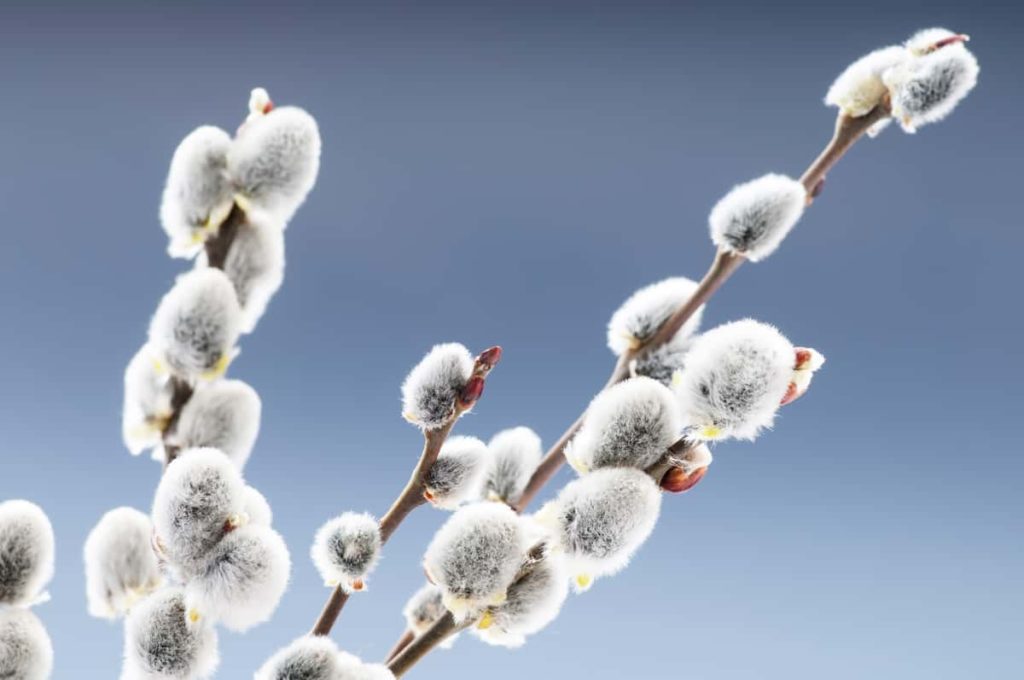
Standout Feature: When most of the landscape lies dormant, the silky, furry catkins of pussy willow give us something to smile about. Willows are easy to propagate and fast growing. Willow male plants produce catkins earlier and they are a great choice because they are prized for their profuse early spring gray fuzzy buds. Their pollen rich fluffy flowers are early food sources for many winged friends.
Size and Shape: Fast growing, pussy willow plants can reach 6 to 25 feet (2 to 8 m) in height. They spread up to 15 feet (5 m) so give them plenty of room.
Hardiness Zone: 2 to 7.
Care: Moist, slightly alkaline soil is best. They grow wild in wetland areas in northern climates, enjoying a cold winter. They can handle warmer places and high humidity but they may grow more slowly.
Best Use: Pussy will is wonderful in a natural garden space, butterfly garden, as a specimen, or you can use it as a screen or hedge. It may attract wildlife so you may not want it placed next to your prized rare plants or veggie garden.
8. Russian Almond (Prunus tenella)
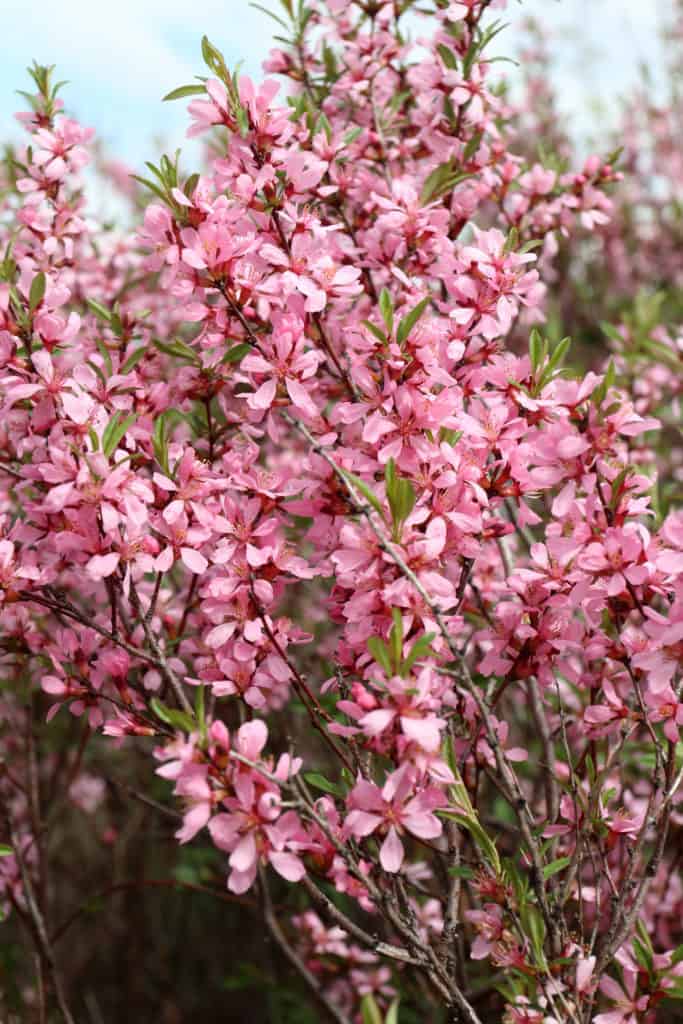
Standout Feature: Russian Almond is a compact, dense shrub whose smooth red branches are covered in gorgeous rose-pink blooms in early spring before its lush, dark green leaves appear. Flowers become an edible nut. A valuable shrub for wildlife as food and cover.
Size and Shape: A hardy, small shrub with a suckering habit grows to 2 to 5 feet (60 to 150 cm) tall and can have a natural, irregular shape.
Hardiness Zone: 2 to 6.
Care: Loves well-draining rich soils in full sun and can tolerate acidic, neutral, and alkaline conditions in sandy, loamy, or clay soils. May spread by suckering up to 4 feet (120 cm). Only prune just after flowering to thin out branches or to shape it.
Best Use: Beautiful to use to fill in an area or used as a screen or specimen planting. It makes an excellent, gorgeous early spring cut flower. Flowers can be ‘forced’ indoors as well if this early bloomer is not quite early enough!
There are so many flowers, blossoms, and blooms to come. For those of us who just can’t wait any longer, try these earliest of early flowering shrubs to get a jump on your blooming seasons!
